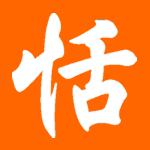Reader A. Hanagata emailed this photo with the following description:
"I'm Japanese, and a friend of mine has this tattoo... she told me it meant 'poison' and I told her that it most certainly did not. Perhaps in Chinese it means something. I personally do not recognize it."
I used the similar font that tattoo was done, the closest character I have found is 妻, which means "wife".
Among other similar characters are:
妄 = absurd, foolish, reckless; false
妾 = concubine
委 = appoint, send, commission
姜 = ginger
Update: Reader Joel/Zhwj emails
The top portion is a typical way of writing the top of 毒, 青, and so on (here's a 精神, for comparison); the bottom portion has three main differences from the type version of 母: (1) it's rotated, so the verticals and horizontals are now angular; (2) the the hooked turning stroke is connected to the middle horizontal, and (3) the dots have been made into a line, which unfortunately doesn't extend below the middle horizontal (this is the main source of confusion, and is probably due to the lack of resolution the tattoo artist had to work with). I've sent you an image, Tian, of the two characters written in a font modeled after Qi Gong's handwriting; the 毒 is written in the same style as this photo.


It looks more like 妻 than 毒 to me too, but to be fair, 母 written cursively could plausibly look something like 女.
ReplyDelete(consider the seal form, where the component at the bottom is actually 毋 (later mutated to 母), but looks like 女, which is cognate.)
ReplyDeleteThe bottom half of the character looks like あ (a in hiragana) to me, and generally in Japanese caligraphy, あ is used to represent the character 女 (often seen in the character 桜).
ReplyDeletepoison? wife? really, why split hairs?
ReplyDeleteIf the bottom is あ then maybe the top is す
ReplyDeleteすあ?
sua?
i think the nature of some forms of chinese calligraphy makes it so that there's no absolute set way to write things. one person's caligraphy is another's meaningless scribble. i think it's quite plausible for the tattoo to be 毒. i've seen messier caligraphy.
ReplyDeleteThe top portion is a typical way of writing the top of 毒、青, and so on (here's a 精神, for comparison); the bottom portion has three main differences from the type version of 母: (1) it's rotated, so the verticals and horizontals are now angular; (2) the the hooked turning stroke is connected to the middle horizontal, and (3) the dots have been made into a line, which unfortunately doesn't extend below the middle horizontal (this is the main source of confusion, and is probably due to the lack of resolution the tattoo artist had to work with).
ReplyDeleteI've sent you an image, Tian, of the two characters written in a font modeled after Qi Gong's handwriting; the 毒 is written in the same style as this photo.
As an odd aside, in Swedish the words 'poison' and 'marriage' are homonyms-- both called gift.
ReplyDelete